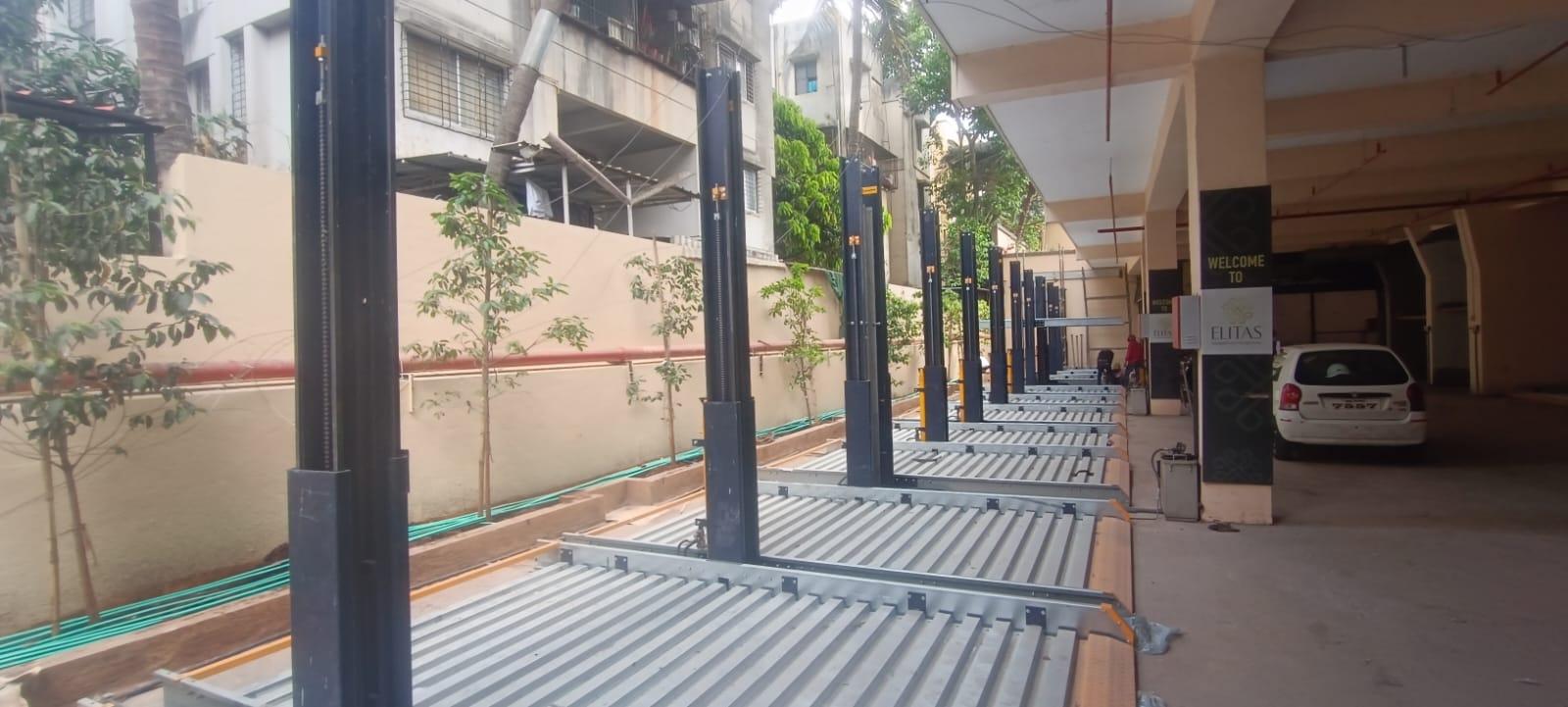Gesponsert
Revolutionizing Urban Mobility: The Rise of Stack Parking Systems in India

Urbanization is on the rise, and so is the number of vehicles on the road. With this rapid growth, one of the most pressing issues in metropolitan cities is parking. Streets are clogged, traditional parking lots are full, and real estate prices are soaring. In this chaos, one innovative solution is transforming how we think about urban space Stack Parking Systems.
This advanced parking technology not only solves space constraints but also offers convenience, efficiency, and futuristic ***gn, making it ideal for residential, commercial, and industrial use. In this blog, we’ll explore everything about stack parking systems: how they work, types, benefits, implementation challenges, and their growing popularity across India.
What Are Stack Parking Systems?
A Stack Parking System is a mechanical parking structure that allows multiple vehicles to be parked vertically in the same footprint. By lifting and stacking cars one above the other, this system maximizes the use of vertical space without requiring extensive land expansion.
The system uses a combination of steel frames, platforms, and hydraulic or electric lifting mechanisms. A car is driven onto a platform, which is then raised or lowered to accommodate other vehicles in stacked layers. This makes it a perfect fit for places where horizontal space is limited.
Why Stack Parking Systems Matter Today
India is home to several congested cities like Mumbai, Delhi, Bengaluru, and Chennai where the problem of parking is becoming worse by the day. The demand for private vehicles continues to rise, but the availability of open parking space is on a sharp decline. Here’s where stack parking steps in as a practical and scalable solution.
It allows property owners to:
-
Utilize vertical space
-
Increase parking capacity by 2x or even 3x
-
Reduce traffic congestion around parking areas
-
Ensure safer and more organized parking
For urban developers and architects, stack parking systems are no longer optional they are necessary.
Types of Stack Parking Systems
There are different types of stack parking systems, each catering to specific needs and space limitations:
1. Two-Level Stack Parking
Ideal for residential buildings and small commercial complexes, this system enables two cars to be parked — one on the ground and one on the elevated platform. It's a cost-effective choice that offers easy operation and minimal maintenance.
2. Three-Level Stack Parking
Used in areas with very limited ground space but a higher requirement for parking capacity. This system allows three cars to be parked vertically. It requires stronger lifting mechanisms and precise engineering.
3. Semi-Automatic Stack Parking
A semi-automatic version provides both mechanical lifting and some level of automation in platform movement. It reduces manual handling and is more efficient than purely mechanical systems.
4. Fully Automatic Stack Parking
Best suited for large corporate buildings or malls, this system doesn’t require drivers to park the car manually. The system picks the car, stacks it, and retrieves it as needed. This offers maximum space utilization and security.
Benefits of Stack Parking Systems
Adopting stack parking systems comes with several advantages that extend beyond just saving space:
1. Space Optimization
The primary advantage is the efficient use of vertical space, which is especially important in land-scarce urban environments. Even in tight spots like basements, rooftops, or alleyways, these systems can be installed.
2. Increased Parking Capacity
Depending on the type of system installed, stack parking can multiply the number of cars parked in the same footprint. A two-car space can now accommodate four to six cars.
3. Enhanced Safety
Cars are stored securely within the mechanical framework, reducing the risk of theft, vandalism, or accidental damage. Some systems also feature lockable platforms and sensor-based technology.
4. Convenience and Speed
Once a system is installed and operational, drivers enjoy faster parking and retrieval times. Automated systems can retrieve a car in under 2 minutes, saving time for busy professionals and shoppers.
5. Environmentally Friendly
By reducing the need for sprawling surface-level lots, stack parking systems contribute to more green areas and lower heat generation from concrete lots. Reduced driving around looking for parking also cuts down emissions.
6. Cost-Effective
In high land-value areas, stack systems offer excellent returns on ***. The cost of vertical development is often less than acquiring more land for surface parking.
Where Are Stack Parking Systems Being Used?
1. Residential Societies
Modern apartment complexes are increasingly incorporating stack parking into their architectural plans. This makes it easier for residents to own cars without worrying about space.
2. Corporate Campuses
With hundreds of employees driving to work daily, offices are adopting automated stack systems to accommodate large fleets in small footprints.
3. Shopping Malls and Hotels
High traffic areas such as malls, entertainment hubs, and hotels need smart parking solutions. Stack systems offer visitors a seamless experience and reduce traffic jams around entrances.
4. Hospitals and Institutions
Medical facilities require round-the-clock access for vehicles. Stack parking systems ensure better management of staff, patient, and visitor parking without compromising movement.
5. Railway Stations and Airports
Public transportation hubs are embracing stack parking to handle large volumes of vehicles. These systems help reduce crowding and improve flow management.
Implementation Challenges
Despite the numerous benefits, there are challenges in implementing stack parking systems, especially in older urban areas:
1. Initial ***
While stack systems are cost-effective in the long run, the upfront cost of installation, especially automated systems, can be significant.
2. Regulatory Approval
Municipal permissions and building code compliance are essential. This may delay implementation in some cities where local policies are unclear.
3. Maintenance Requirements
These mechanical systems require regular inspections and maintenance. Hydraulic lifts, control systems, and safety features need to function flawlessly for long-term use.
4. User Familiarity
In some residential settings, residents may initially be hesitant to use these systems due to a lack of familiarity or fear of technical glitches.
However, with proper training and awareness programs, these barriers can be easily overcome.
The Future of Stack Parking in India
The demand for smart cities and intelligent infrastructure is growing. Stack parking systems will play a pivotal role in reshaping *** urban spaces. As automation becomes more affordable, more cities and even tier-2 towns are likely to adopt this solution.
The integration of IoT (Internet of Things), AI-based car detection, smart payment options, and mobile apps for parking access are already being explored. In the coming years, we may even see systems where a car can be booked, parked, and retrieved with a single tap on a smartphone.
Moreover, government bodies are beginning to acknowledge the role of structured parking in urban planning. In cities like Mumbai and Bengaluru, policies encouraging vertical parking systems are slowly gaining traction.
Things to Consider Before Installing a Stack Parking System
If you are a developer, building manager, or housing society member considering a stack parking system, keep the following in mind:
-
Space Assessment: Conduct a detailed feasibility study of the available area, height restrictions, and building ***gn.
-
Load-Bearing Capacity: Ensure that the structural foundation can bear the weight of multiple cars and the system itself.
-
User Access: Consider how easy it will be for users to drive in and out without causing traffic inside the premises.
-
Power Supply: Especially for automated systems, an uninterrupted power supply is crucial.
-
Emergency Features: The system must be equipped with emergency controls, manual overrides, and safety interlocks.
Stack parking systems are not just a futuristic concept they are a present-day necessity. In the fast-growing *** cities where space is at a premium and the number of vehicles continues to grow, vertical parking solutions offer a way out of the parking crisis.
With smart planning, efficient ***gn, and proper execution, these systems can transform not just how we park, but how we live in urban environments. They contribute to cleaner streets, better air quality, smoother traffic, and happier communities. By embracing stack parking systems today, we are building smarter cities for tomorrow.







